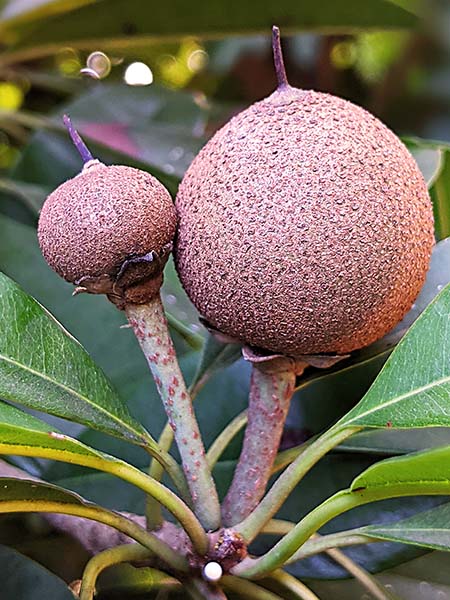 Botanical name: Manilkara zapota
Botanical name: Manilkara zapota
Crown and root system: This is an evergreen tree with a medium-sized crown. The root system is extensive but non-aggressive.
Growing regions: Areas that are free of frost.
Ripening date: The fruit ripens in the spring to early summer. The fruit has the shape and size of an egg. The peel is brown with a yellow-brown flesh, depending on how ripe it is. The taste is reminiscent of pear and dates, it has a tropical aroma and is very juicy. In India the tree is called “chikoo” and its fruit is popular among locals and tourists, and is eaten fresh or used in shakes.
Planting in a container: May be grown in a container, with regular pruning.
Recommended planting date: All year round, except for cold months.
Good to know:
In ancient times the Indians used the tree sap to produce the first chewing gum. Today this is almost never done because of the relatively high production costs of the sap. The trunk of the sapodilla dree is hard and dense, with a deep red color. The Mayan people used the tree branches and trunk to build their temples and even today one can see among the building remains, beams and lintels made of sapodilla wood that has survived the ravages of time.
Additional names for the sapodilla tree:
Manilkara zapota, Mispel, Dilly, Chico, Chicle tree, Sapoti, Sapathilla, Zapote, Chicosapote

